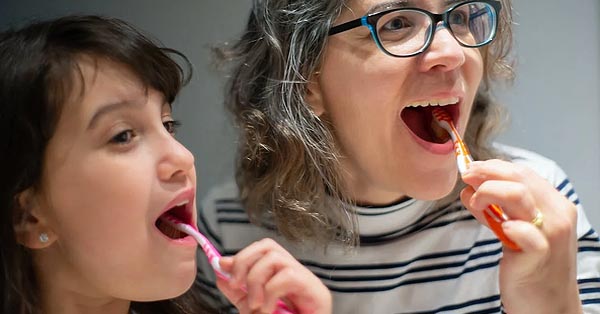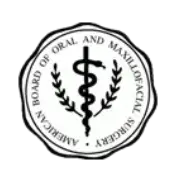Removing plaque and tartar from teeth
By: Jamie Eske, Medical News Today
The buildup of plaque tartar on the teeth can cause bad breath, tooth decay, and gum disease. However, several simple home remedies can help treat and prevent plaque and tartar. Learn them via Medical News Today! The Oral Surgery DC Team
Plaque is a soft, sticky film that builds up on the outside of the teeth and along the gum line. A person can often prevent and treat plaque buildup at home. If a person does not practice good dental hygiene, plaque can turn into a hard yellow-brown substance called tartar.
When people eat, bacteria in the mouth breakdown the carbohydrates from food into acid, which mixes with leftover food particles and saliva to create plaque.
Brushing and flossing often prevent plaque and tartar from forming. However, tartar can be more difficult to remove and sometimes requires a visit to the dentist's office for a professional cleaning.
Poor oral hygiene can also cause bad breath, tooth decay, and gum disease (gingivitis). Recent research has also uncovered possible associations between gum disease and other health conditions, including pneumonia, dementia, and heart disease.
In this article, learn about simple ways to remove plaque and prevent tartar buildup at home.
Practicing good oral hygiene
Practicing good oral hygiene is the best way to remove plaque and tartar. The American Dental Association (ADA) recommend brushing twice a day with a fluoride toothpaste. They also recommend flossing once a day.
Flossing first will remove pieces of food and plaque from between the teeth and hard-to-reach areas. After flossing, the toothbrush will remove plaque on the surface of the teeth.
To brush the teeth effectively, a person can:
- Start in the back of the mouth with the top molars.
- Use short, circular brush strokes.
- Brush the front and back surfaces of all the upper teeth.
- Repeat steps 1 - 3 on the bottom teeth.
People can achieve great results using manual toothbrushes. However, a 2014 systematic reviewfound that electric toothbrushes, especially those with oscillating heads, are more effective at removing plaque and reducing gingivitis.
After flossing and brushing the teeth, rinse out the mouth with mouthwash. Many over-the-counter mouthwashes contain fluoride for extra protection against plaque.
People who have gingivitis may require a stronger type of mouthwash. A dentist or another healthcare provider can prescribe antiseptic mouthwashes that are more potent than those available over the counter.
Brushing with baking soda
Brushing with baking soda is a safe and effective way to remove plaque. Baking soda can remove plaque without damaging the enamel.
Studies suggest that toothpaste that contains baking soda may be more effective at reducing the amount of plaque in the mouth than traditional toothpaste.
Baking soda also protects against demineralization, which is a chemical process that removes calcium from tooth enamel.
Carbohydrates from food can drastically lower the pH level in the mouth, creating an acidic environment that causes demineralization.
Scientists measure the acidity of a substance using the pH scale. The lower the pH, the more acidic the substance.
The lower limit for enamel pH ranges between 5.1 and 5.5. When the pH drops below this range, demineralization begins to occur.
Baking soda reduces demineralization because it has a high pH, which can help balance the pH level inside the mouth and prevent enamel loss.
The mouth is home to a diverse ecosystem of bacteria, some of which are beneficial while others can be harmful. Streptococcus mutans, for example, is the bacteria primarily responsible for tooth decay.
Baking soda also has antimicrobial properties that may prevent tooth decay. Research suggests that baking soda can significantly reduce the amount of S. mutans.
People can find baking soda in many grocery stores and online.
Oil pulling with coconut oil
Oil pulling is an easy way to remove bacteria from the mouth and improve oral health.
Coconut oil is ideal for oil pulling because of its anti-inflammatory and antioxidant properties. Coconut oil also contains lauric acid, a fatty acid with antimicrobial properties.
A 2015 study involving 60 adolescents with gingivitis found that oil pulling with coconut oil resulted in a 50 percent decrease in dental plaque.
The study participants also experienced a significant decrease in gingivitis symptoms. The researchers believe this was due to the reduction in dental plaque.
To oil pull, a person should:
- Place 1 tablespoon of warm coconut oil in the mouth.
- Swish the coconut oil around the mouth for 5 - 10 minutes.
- Spit out the coconut oil into a trash can or a paper towel.
A person should avoid spitting the coconut oil into the sink, as it may clog the pipes.
Coconut oil is available for purchase in some health food stores and online.
Other effective oils for oil pulling include:
- olive oil
- almond oil
- sesame oil
Prevention
The best way to prevent the buildup of plaque and tartar on the teeth is by flossing once a day and brushing twice a day with a fluoride toothpaste.
Regular dental checkups and professional cleanings can also help prevent and treat oral health problems.
Dentists examine the whole mouth, checking for signs of tooth decay and gum disease. They will also remove any plaque or tartar on the surface of the teeth and in difficult-to-reach places. Dentists can also treat the teeth with fluoride to help prevent tooth decay.
If a dentist notices any cavities or signs of gum inflammation, they will recommend ways to reduce symptoms and prevent further damage. They may prescribe medical mouthwash or suggest adjusting a person's oral hygiene routine.
Dietary changes can also help prevent plaque and tartar buildup. Cutting back on sugar, starch, and acidic foods can reduce the risk of tooth decay.
To reduce the risk of plaque and tartar, a person should avoid:
- cookies, cake, and candy
- starchy or sugary foods that can stick to the teeth, such as bread, potato chips, and some dried fruits
- soda and sports drinks
- citrus juices
Summary
The buildup of plaque and tartar on the teeth can lead to gum disease, enamel loss, and tooth decay.
Poor oral hygiene may also play a role in the development of other health conditions.
Brushing twice daily with a fluoride toothpaste and flossing once daily are the best ways to remove plaque from teeth and prevent tartar from forming.
Other home remedies that can remove plaque include oil pulling and brushing the teeth with baking soda.
Visiting a dentist for regular checkups and cleanings is another essential step for maintaining good oral hygiene.
For people with an excessive plaque or severe gum disease, a dentist may also recommend prescription-strength mouthwashes or changes to the person's oral care routine.
Source: bit.ly/plaquetartar






4.9 Stars
based on 134 reviews
5 Stars
based on 11 reviews
5 Stars
based on 11 ratings